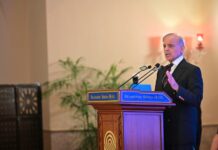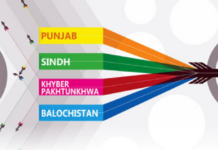It took a decade of stalled deals, diplomatic nudges, and bruised egos, but the government has finally managed to untangle one of Pakistan’s longest-running corporate knots. The ownership dispute over K-Electric—the country’s only vertically integrated power utility—has been settled.
According to a report by The Express Tribune, Pakistani investor Sheheryar Chishty has agreed to step aside and hand over his controlling stake in K-Electric’s parent company, KES Power Ltd, to Saudi prince Mansour Bin Mohammed Al Saud.
The deal marks what officials describe as the largest Saudi investment yet in Pakistan’s power sector. It also points towards the growing importance of Saudi investors in Pakistan and the government’s willingness to make room for them where necessary.
According to Tribune’s report, the deal was achieved with mediation from the Special Investment Facilitation Council (SIFC) and behind-the-scenes diplomacy that reportedly involved Prime Minister Shehbaz Sharif’s own outreach to Riyadh.
The agreement ends a bitter ownership battle that had spilled into courtrooms and cabinet meetings. Saudi investors have been involved in KE in some capacity or the other for more than 20 years now. They first got involved in the company when the Musharraf Administration made the decision to privatize KE in 2005. Saudi and Kuwaiti shareholders have had stakes in KES Power since then, but when Mr Chishty entered the scene in 2022, they viewed it as a coup. His purchase of Abraaj Group’s old stake through his investment vehicle, AsiaPak Investments, has been hotly contested since then.
The Saudis have consistently demanded answers about his source of funds and pressed the Pakistani government to intervene. It is this persistence that seems to have paid off. The content in this publication is expensive to produce. But unlike other journalistic outfits, business publications have to cover the very organizations that directly give them advertisements. Hence, this large source of revenue, which is the lifeblood of other media houses, is severely compromised on account of Profit’s no-compromise policy when it comes to our reporting. No wonder, Profit has lost multiple ad deals, worth tens of millions of rupees, due to stories that held big businesses to account. Hence, for our work to continue unfettered, it must be supported by discerning readers who know the value of quality business journalism, not just for the economy but for the society as a whole.To read the full article, subscribe and support independent business journalism in Pakistan

























A lot of information is missing. Like the ownership structure! If Saudi & Kuwait investors bought 66.4% stake. Who had the rest? Also, how much did Abraaj biy from that 66.4% stake. What was the current shareholding percentage between all stakeholders. How much did Chisty spend to buy out the Abraaj stake. If not publicly available, then where’s the investigational journalism. How much did the prince pay to get Chisty’s stake. Also, answer to source of funds of Chisty.